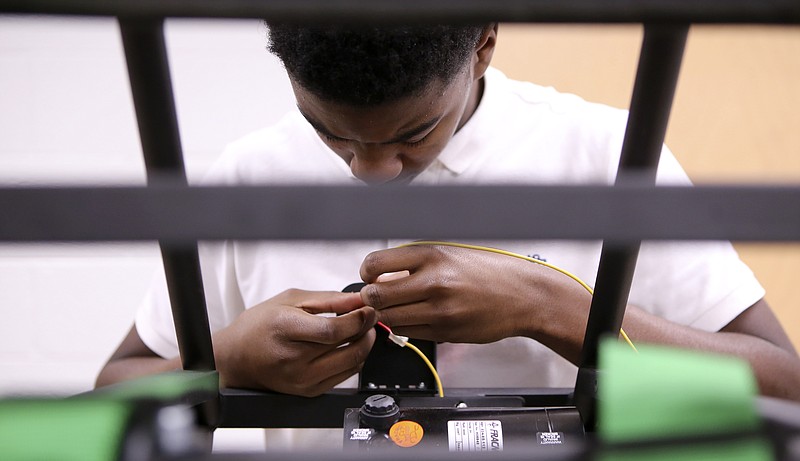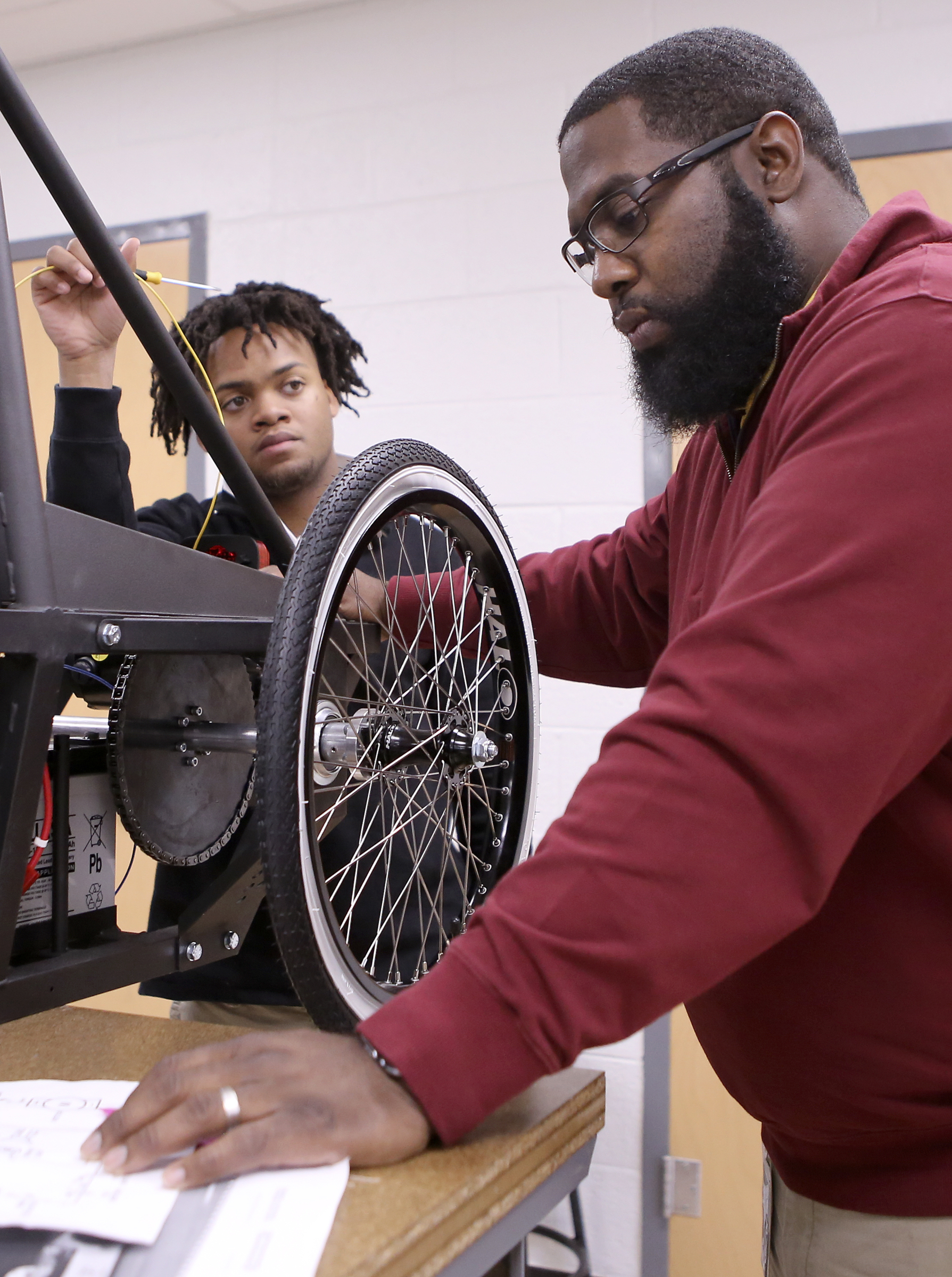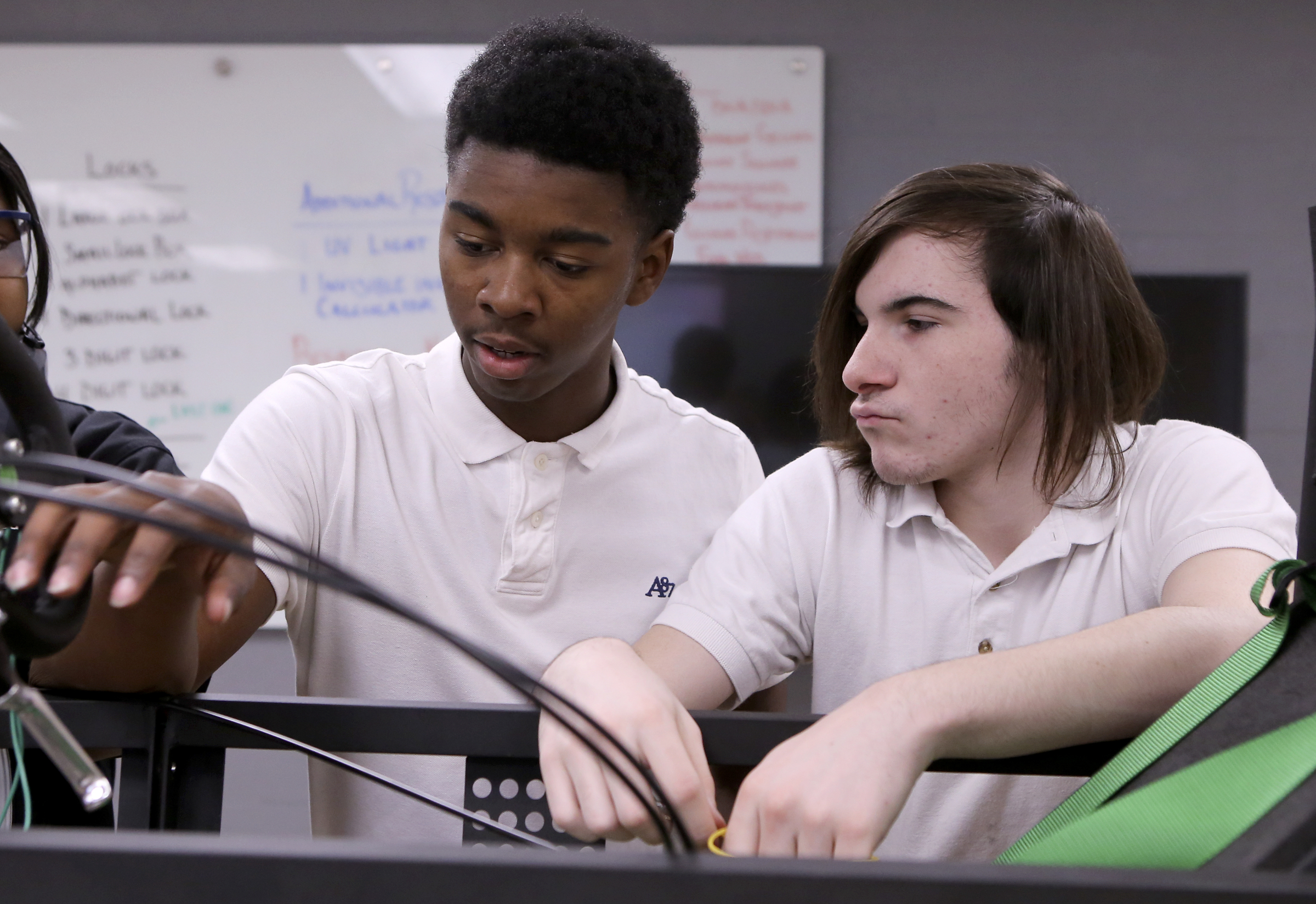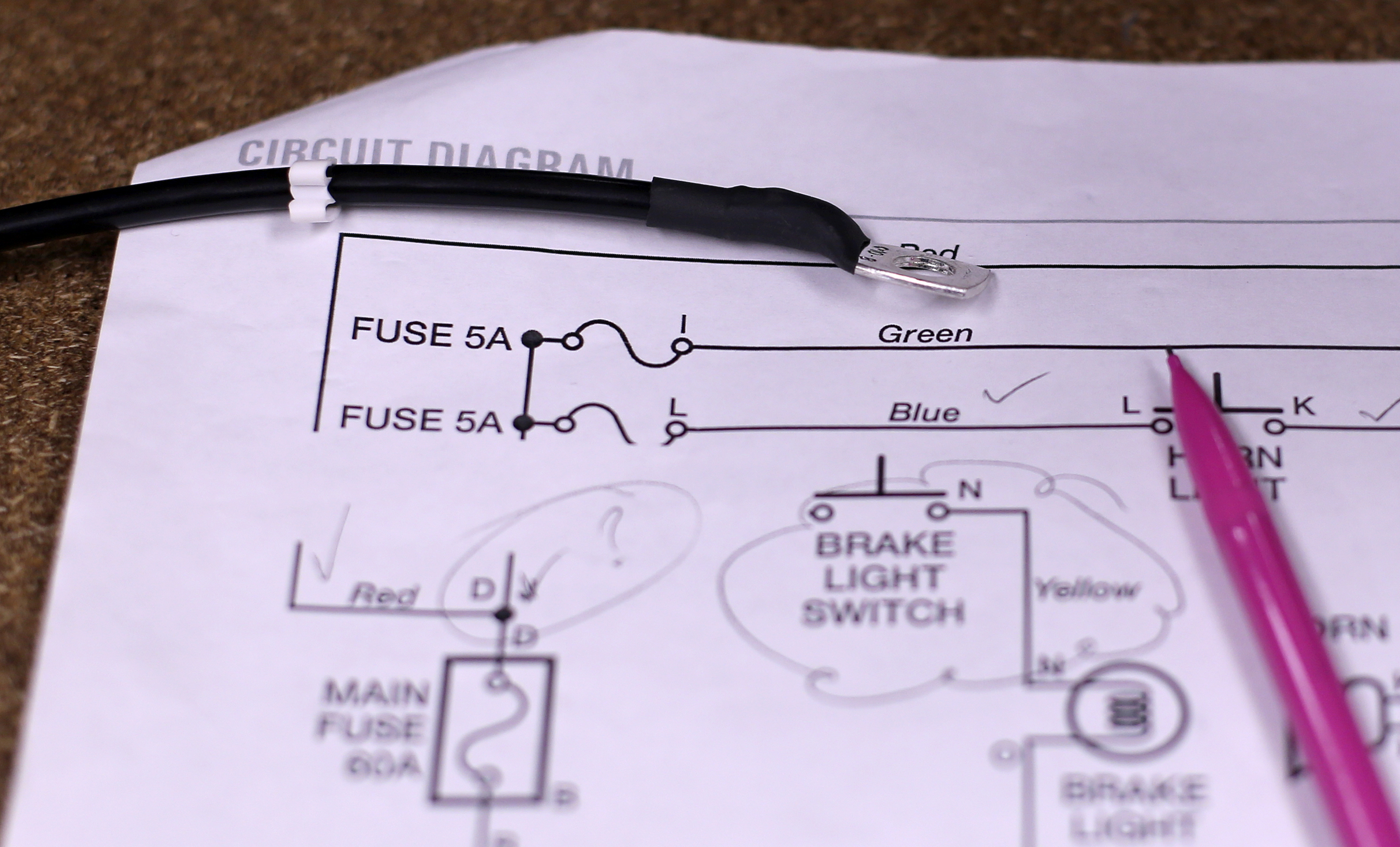But when he briefed his Introduction to Engineering and Design class on its latest assignment - building and racing an electric car - he didn't need to force a single student to work on it.
"When they saw how cool the project was, saw the outcome and what they'd be doing, it pretty much sold itself," the teacher says.
This month, Hardin's students will compete against teams from four other Chattanooga schools, each team racing its go-kart-like electric car during green | spaces' third annual Green School Summit.
Green School Summit
Date: March 23 Time: 9:00 a.m. – 1:00 p.m. Location: Brainerd Crossroads (4011 Austin St.) Cost: Free RSVP: tinyurl.com/GreenSchool Summit2018
Each school was given a kit with materials and instructions for building its vehicles, which run on solar-powered batteries. Students were challenged to tweak the design as they saw fit, aiming to make their school's model fast enough to leave competitors in the dust.
Hardin's class of juniors has been working on their car almost every day since the beginning of the school year. Along the way, there were plenty of lessons to learn.
One student, Jai Meadows, recalls the day when the chain that spins their vehicle's wheels popped off due to excess tension. Another student, Marquez Williams, recounts the time the class couldn't get the car's wheels to stop simultaneously, causing the car to slide when the student driving it hit the brakes.
Each time the teens stepped back to analyze an issue and develop solutions, they were learning how to tackle complex problems through trial and error, Hardin says. Those critical-thinking skills came in handy when the class started working to determine the best way to handle their car's wiring.
On race day, three different students will have a chance to drive the car during the 90-minute relay. To ensure a smooth transition from one driver to the next, the students had to be strategic about where they placed wires. With no forethought, drivers could waste precious seconds with their legs tangled in the cables or, worse, tear them out altogether.
Lesson 2: Practical Application
Hardin's students no longer have to wonder how algebra or trigonometry apply to everyday life. Moreover, the students have already touched on physics by considering wheel alignment and dabbled with mathematical principles while considering the shortest distance around the race track. They'll also tackle weight distribution as they alter the placement of the car's battery to make the vehicle faster and improve its handling.
Hardin says these "teachable moments" come along much more organically with hands-on experiences than they do through textbooks.
"We learned through the actual experience of working together," says student Cody Sowers, who hopes to enter the engineering field someday.
The 11 juniors in Hardin's class come from all walks of life.
"I've got student athletes on one side, and I've got honor students on the other side," he says. But each contributes to the project in a way that complements his or her unique skills.
For Katlyn McDaniel, that means taking a more active role in the project's research arm. For classmate Marietta Song, that means working to communicate with sponsors.
"I want to be a graphic designer, so making posters really goes into that," Song says.
While playing to their strengths, working together to solve problems also opened the door to new opportunities.
"I just like the idea that we got exposed to the different career [possibilities]," says student Wilmer Perez. "I just never saw myself doing stuff in robotics or stuff that involves engineering."
Participating Schools:
Dalewood Middle School | East Lake Academy | Chattanooga Girls Leadership Academy | STEM School Chattanooga | Howard High School



